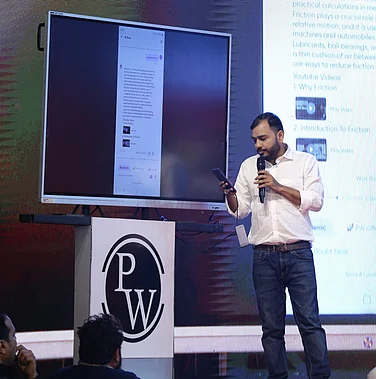Throughout history, the evolution of design has been consistent with the evolution of mankind. It has harmoniously adapted its means and methods of expression to cultural, technological, and organizational changes across the times. Human-centred design is now the keystone of every aspect of design operation in a globalized, interconnected space. Design is now effectively collaborating with other streams of studies to solve problems, craft engaging products, and curate experiences that are enabled by technology. This congruence of multiple disciplines with design, has led to a paradigm shift, making a designer don many hats - from designing communications to designing businesses, creating futuristic experiences, and delivering value through connected environments.
Advertisement
As India strives to transform into a self-sufficient nation and Prime Minister Narendra Modi led “Make in India” campaign has struck a chord with one and all, the aspect of design-in-India is being pegged to be equally important to the make-in-India campaign. Design is being seen as the one indisputable and essential element without which India cannot be envisioned as a global destination of manufacturing and production.
Corporate giants in India are hovering over design schools to induct graduates and employ rich creative brains to innovate new and cutting-edge products to meet requirements and ever-changing preferences of the discerning end consumer. Titan Group, Philips, Adidas India, Adobe, Ashok Leyland, Future group, GE Healthcare, General Motors, Myntra, Godrej Industries, Hindustan Unilever, IBM India Research Lab, Infosys, Oracle are just a very few brands to name, who have in the recent times been identified as leading employers fetching talent from design schools.
Advertisement
Design is a dynamic field with infinite scope to innovate and reinvent. It is not restricted to appearance alone but also to utility and functionality. Every industry, be it automobiles, apparels, gadgets, or software are focused on design and the value of a design school graduate is being appreciated simultaneously. All the HR honchos globally have their horizons opened for design thinkers and are offering monetary compensations that were not even imagined a decade ago.
This shift in career preferences and demand within companies, for design school grads, is primarily because of the changing trends in the Indian market, which has become the largest consumer market after the US and China. Indian consumers today are well aware of trends and advancements in technology, and demand similar sophistication and more importantly, they want products built as per their needs. This demand for product localization applies across all sectors. Multinational companies are now selling products that are not just made in — but that are made for - India. Given India’s electricity situation, Whirlpool India designed washing machines that restart automatically after a power failure; LG and Samsung designed refrigerators that keep food cold for four to five hours without electricity. In South India, microwave ovens have an idli-mold as a starter kit. Tupperware sells a round spice-box designed and manufactured in India for India. It redesigned its serving spoons for serving Indian rice, gravies, and dry dishes. Redesigning a product or introducing a new one helps a brand reach out to an additional local consumer.
The design horizontal cuts across all verticals; it is a boundless domain offering candidates to challenge their limits and creativity, thus ensuring no chance for a creative mind to feel stagnated in his career. Since the global economy has ‘design’ etched on its route to development, financial prosperity associated with this career domain will always grow and remain secure.
Emergence of design as a mainstream discipline in higher education has still not reached Tier 2 and 3 cities, where preference for careers in medicine, law, engineering, and public services continues to be strong. As a result, the potential for absorption in the job market continues to be high for design graduates as the supply is far less than the demand. There are just a few thousand seats in top design schools per year implying that only about 20 per cent of the actual demand for D-school graduates is fulfilled. Considering that the multiple industries across disciplines are looking for exceptional design talent, only a few hundred talented ones are available today. While this is a challenge at the moment, it also means that the scope is wide and there is reason for optimism in students aspiring to pursue a career in design. It is instilling a confidence that by the time of completion of their degree there will be a prosperous job awaiting them.
Advertisement
As industries across all verticals are in the know of the value of design and strategy and its increasing importance for flourishing sales, the demand for design school graduates will rise, guaranteeing ripe monetary benefits. In India, the design industry is a sprouting new channel for imaginative and prolific minds to put their virtue to the best interest of the nation and for their own growth and prosperity.
The author is the Vice Chancellor at World University of Design
DISCLAIMER: Views expressed are the author’s own. Outlook Money does not necessarily subscribe to them. Outlook Money shall not be responsible for any damage caused to any person/organisation directly or indirectly.















 Just one email a week
Just one email a week